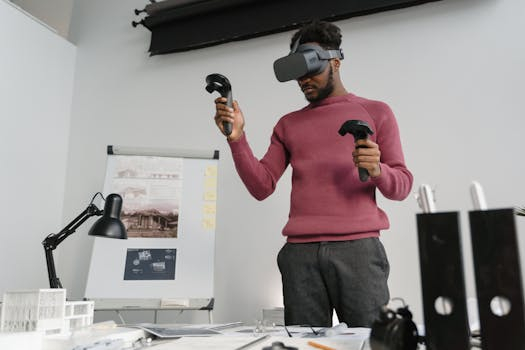The Future of Workplace Creativity and Innovation
The workplace is constantly evolving and with the ever-changing demands of the modern world, creativity and innovation have become vital to the success of any company. As new technologies and ideas emerge, the future of workplace creativity and innovation is poised to revolutionize the way we work and think. In this article, we will explore the trends and changes that will shape the future of workplace creativity and innovation.
The Rise of Remote and Flexible Work
Gone are the days of traditional 9-to-5 office jobs. The rise of remote and flexible work has created a significant shift in the workplace dynamic. With more and more companies adopting telecommuting policies, employees are no longer restricted to a physical office space, allowing them to work from anywhere in the world.
This shift towards remote work has also brought about a surge in freelance and gig economy workers who work on a project-to-project basis. This diverse and decentralized workforce brings new perspectives and ideas, fostering a more creative and innovative environment.
Embracing Artificial Intelligence
Artificial intelligence (AI) is no longer just a concept in science fiction films. It is now a reality and has already made its way into the workplace. AI-powered applications and tools are becoming increasingly prevalent in various industries, simplifying and automating mundane tasks, freeing up time for employees to focus on more creative and strategic work.
Furthermore, AI has the capacity to analyze large amounts of data and generate insights, leading to more informed and innovative decision-making. As AI continues to advance, it will play an even more significant role in driving workplace creativity and innovation.
A Collaborative and Inclusive Environment
Gone are the days of isolated cubicles and closed-door offices. The future of workplace creativity and innovation will be driven by collaboration and inclusivity. Companies that foster a culture of inclusivity and collaboration will attract a diverse pool of talent and ideas.
Collaborative workspaces, where employees from various departments and backgrounds can come together, will become commonplace. This encourages the exchange of ideas and perspectives, leading to more innovative solutions and strategies.
The Influence of Millennials and Gen Z
Millennials and Gen Z are quickly becoming the dominant force in the workforce, with their own set of values and expectations for their careers. Unlike previous generations, these younger workers prioritize creativity, purpose, and a healthy work-life balance.
To attract and retain top talent, companies will need to adapt to these changing values and provide a workplace that fosters creativity and innovation. This includes offering flexible work arrangements, mentorship opportunities, and a culture that values diversity and inclusivity.
The Importance of Continuous Learning
In the fast-paced world of today, skills and knowledge become outdated quickly. To stay ahead and continuously innovate, companies will need to invest in continuous learning and development initiatives for their employees.
This can include providing access to online courses, workshops, and seminars to improve employees’ skills and knowledge. By encouraging continuous learning, companies can foster a workplace that is constantly adapting and evolving, leading to a more creative and innovative environment.
The Role of Emotional Intelligence
Emotional intelligence (EI) is the ability to understand and manage emotions, both in oneself and others. In the future workplace, EI will become just as crucial as technical skills. Employees with higher levels of EI are more adept at problem-solving, communication, and building strong interpersonal relationships, all of which are essential for creativity and innovation to flourish.
As companies continue to prioritize EI in their hiring and training processes, the workplace will see a significant increase in productivity and creativity.
In Conclusion
The future of workplace creativity and innovation is exciting and full of potential. With the rise of remote work, embracing AI, a collaborative and inclusive environment, the influence of younger generations, continuous learning, and EI, companies can create a workplace that fosters creativity and innovation.
By adapting to these trends and changes, companies can stay ahead of the competition and achieve long-term success in the ever-evolving world of business. Are you ready for the future of workplace creativity and innovation?











